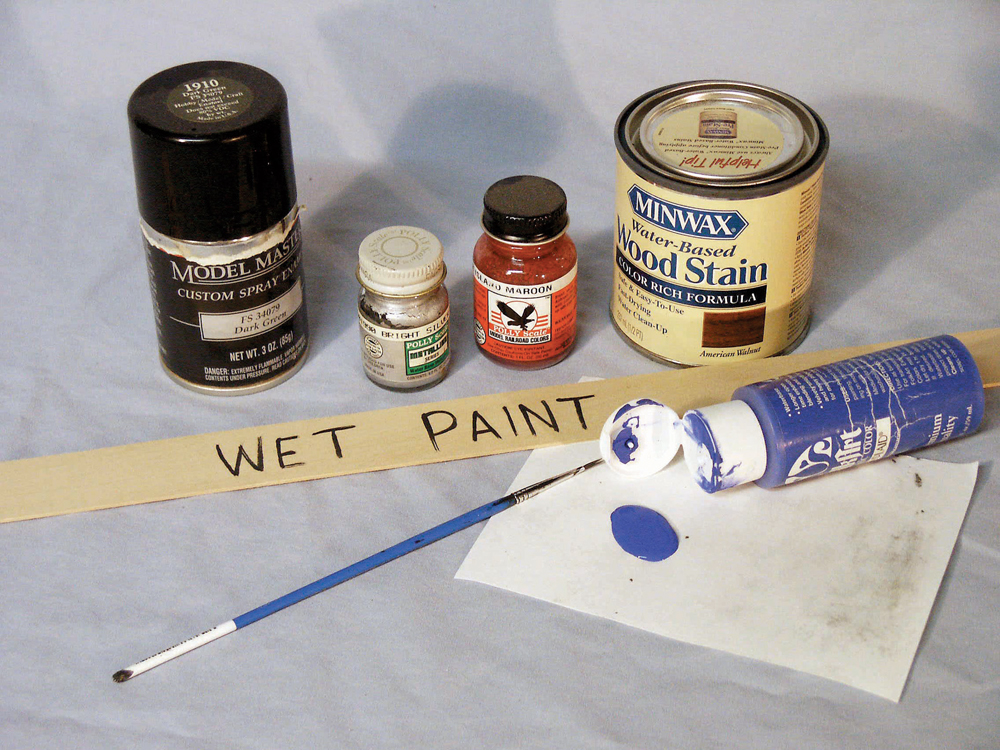
There are three basic ingredients to any paint: the pigment, the binder, and the solvent. The pigment is what gives the paint its color. These are either synthetic or organic, depending on the desired color. The binder does just as the name suggests. Its job is to hold everything together once the paint dries.
The solvent is the liquid carrier for the binder and the pigment. It evaporates away during the drying process. Most modern paints also have a fourth component, a myriad of additives that affect things such as drying time, viscosity and flow, finish, UV resistance, weather and temperature resistance, and shelf life.
The principal division in paints is in the solvent that carries the pigments and binders. There are two basic categories—oil or solvent-based (alkyd) paints and water-based (acrylic and latex) paints.
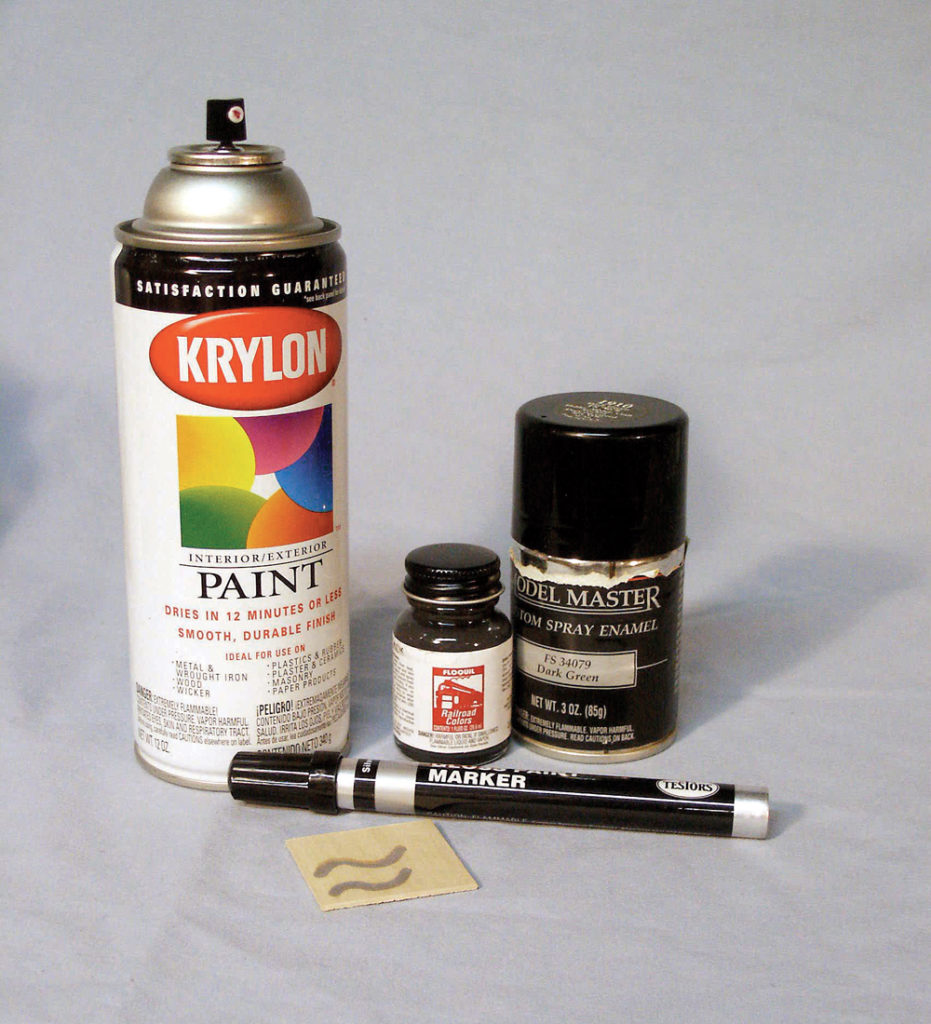
Alkyd paints and lacquers
In the alkyd family, there are two players—lacquers and enamels. Lacquers aren’t common in hobby paints but do show up in some specialty finishes like metalizers. Lacquers differ from enamels in the solvent used and the thinners needed to clean up afterwards.
Enamels are far more common in the realm of hobby paints. If you’re planning on airbrushing your model, they’re still the some of the best paints for that application. Most popular commercial spray paints are enamel paints (Krylon and Testors), though some brands are lacquers. If you’re using sprays, read the label to find out what kind of paint it is, as one kind will attack the other if sprayed on top of it.
The biggest drawback to these paints is the cleanup. Both lacquers and enamels require solvent-based thinners to clean the brushes. The vapors are flammable and can be harmful to breathe. Disposing of used thinner requires the same diligence as discarding oily rags.
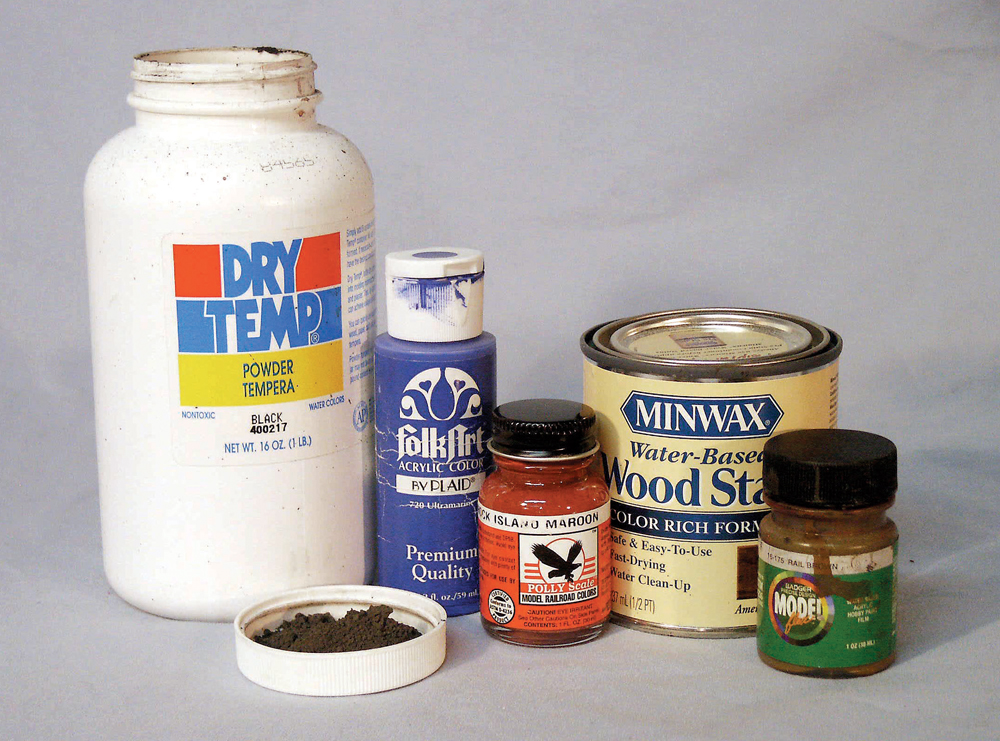
Water-based paints
As with alkyd paints, there are two members of the water-based family: latex and acrylic. Latex paints are less common in the model world. Acrylics make up the lion’s share of hobby paints. Unlike lacquers and enamels, though, latex and acrylic paints are more compatible with one another. The reason is the simple solvent used: water. Cleanup is as easy as turning on a faucet. Most of my paints are $1 bottles of paint found at craft stores.
Acrylic paints tend not to spray as well as enamels. If you intend to use an acrylic or latex paint in an airbrush, make sure it’s got finely ground pigments.
Of particular importance to garden railroaders is the UV stability of the paint. Few hobby or craft paints have UV stabilizers. This means they will tend to fade, crack, and otherwise deteriorate more quickly outdoors than indoors. They’re great for items that move indoors, but they’re not so well suited for buildings that spend most of the time outdoors. For this, I’d use an exterior-grade latex paint from the home-improvement store. A good exterior-grade latex will last 10+ years, depending on the environment.
The last thing to consider is the finish that a paint has once it’s dry. There are three basic finishes a paint can take. A gloss finish is highly reflective. If you’re planning to apply decals to a model, a gloss finish will give you the best results. At the other end of the spectrum is a flat finish. This surface has almost no reflectivity to it. A semi-gloss or satin finish lies in the middle. It’s got some reflectivity, but not so much that you can see yourself in the reflection.
Brushes
Thin paints work well with soft brushes, but thicker paints need a stiff brush to move them around. You don’t have to buy top-of-the-line brushes for our purposes, but you will want to stay away from the bargain-basement brushes.






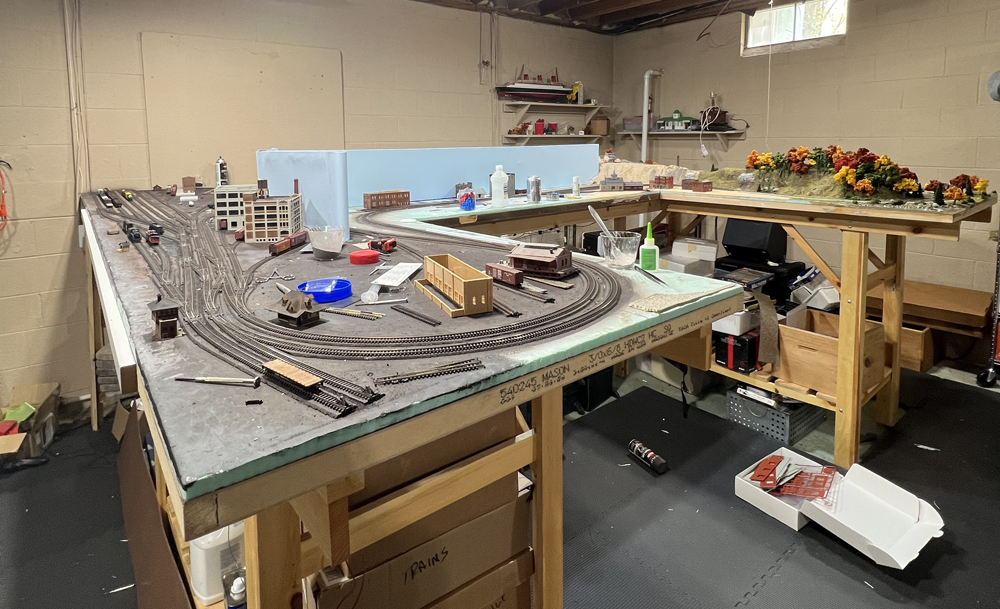
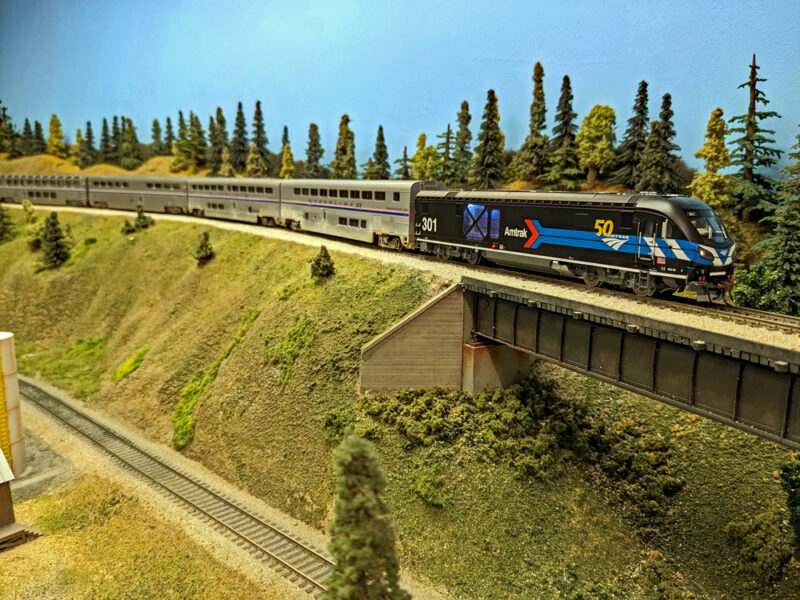
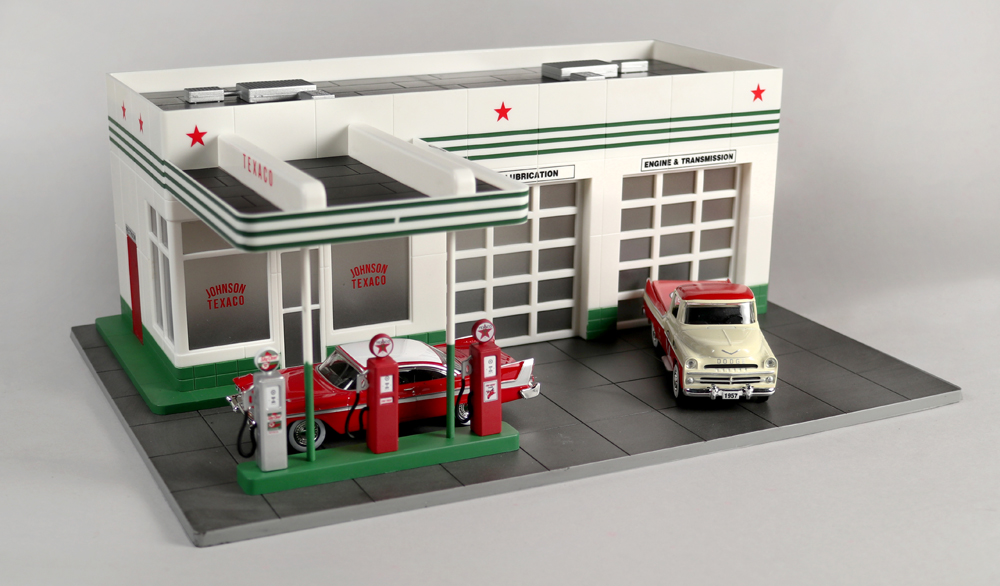
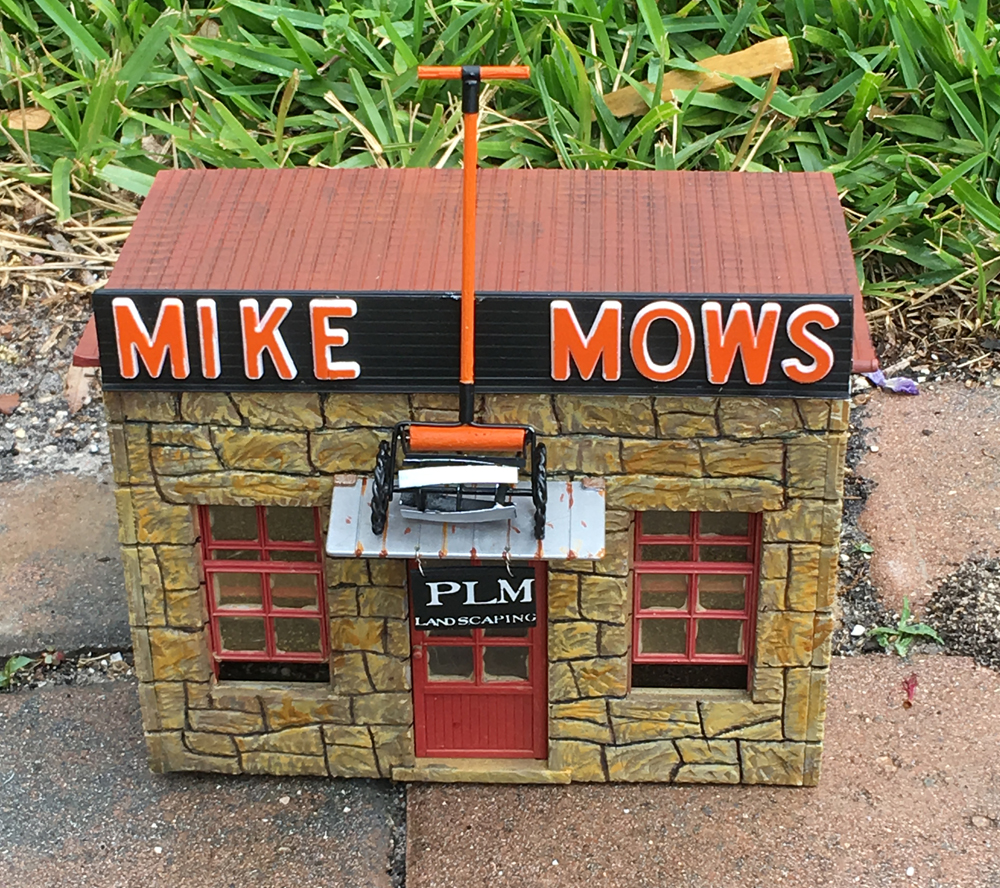




I’ve found Floquil paints (not acrylic) do not hold up well outside. They fade or discolor rather quickly.